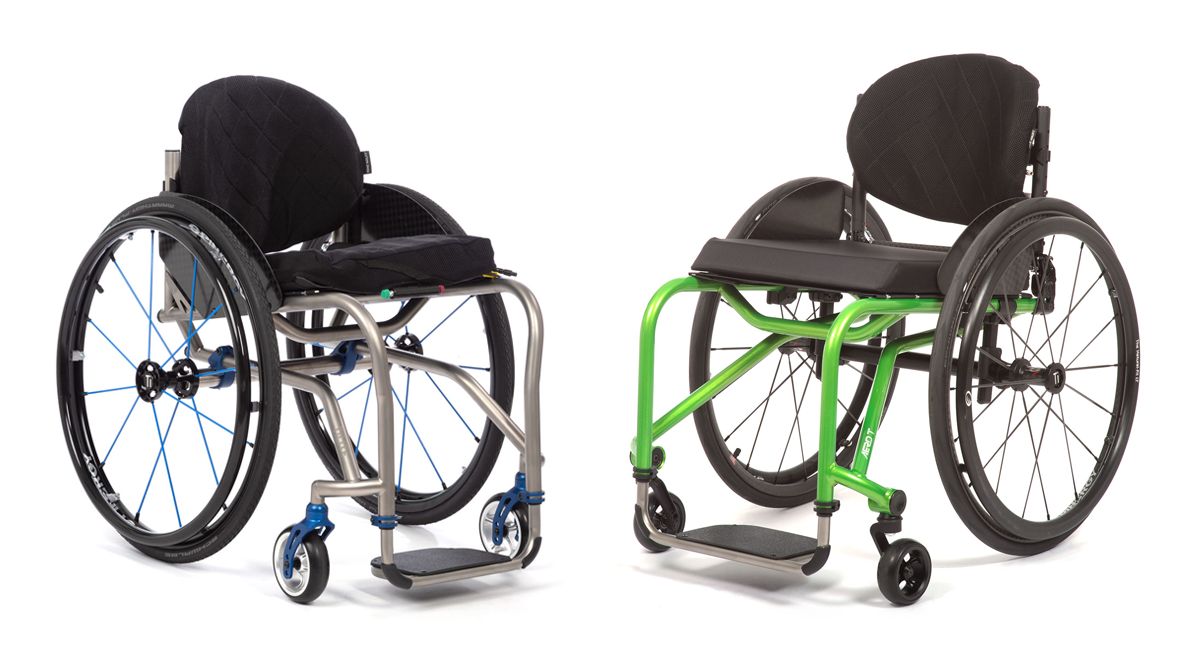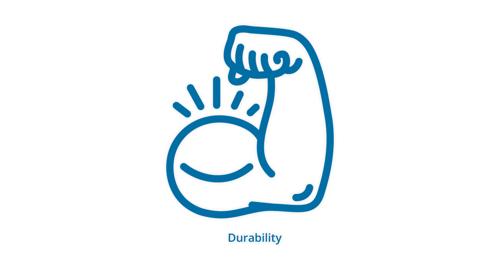This blog is part of our TiLite balanced ride blog series. See part 1, part 2, part 3, and part 4. See our page all about a TiLite Balanced Ride here.
When you look at ultra-lightweight manual wheelchairs these days, they look more sleek and stylish than ever. And why shouldn’t they? A properly fitted wheelchair can be seen as an extension of the individual, so it should have style. By just looking at these wheelchairs side by side it’s hard to know the differences or factors that set them apart if you’re not an expert in wheeled mobility. One of these factors is the frame material.

Why Does Frame Material Matter?
The frame material is not always obvious these days because of all the aesthetic options for wheelchair frames. Yet it’s imperative that a clinic and a wheelchair user understand the benefits and considerations of different frame materials when deciding on a wheelchair. In our recent blog we took an in-depth look at the science behind these materials, and today we will share a user’s experience of using aluminium vs. titanium. Every individual is unique and has needs that are distinctive to their lifestyle. Choosing the right frame material is part of meeting those needs.
Meet Seth McBride

Seth is an active guy who loves the outdoors and playing sports. He lives on a farm and is always on the go. He is a former full-time wheelchair rugby player and is now an editor at a lifestyle magazine. Throughout the years, Seth has been an advocate for his wheelchair needs based on his seating requirements and ensuring the best fit for his active lifestyle. After his first wheelchair (which was aluminium), Seth discovered titanium and immediately felt the difference. He used titanium for several years until he was faced with an opportunity to try something new.
Seth was offered a brand new aluminium wheelchair sponsored by a small company. It had an ergo seat (read more here about ergo seating) and the frame was very similar in design to his Titanium wheelchair. He appreciated the chance to get a new chair and decided to trial it. He lived with the aluminium frame for almost 3 years, then went back to a titanium frame that was welded in 2002 and provided by a friend. He is in it to this day and is currently working towards getting a new titanium wheelchair that is fit and configured specifically to him.
There are benefits and considerations to each frame material. Since Seth lives an active lifestyle and has lived with both aluminium and titanium, we thought it would be interesting to get his insights based on this experience.
1. Lightweight

The aluminium chair had many adjustable components compared to the welded titanium frame. More components mean added weight.
“Most important for me is weight because I use a regular car and I need to pull my wheels off and pull my frame and the chair into the car. So the heavier that is, the more issue it is for my shoulder to pull it in and out of the car all the time. And weight is also important for pushing. I lead a pretty active lifestyle, so I end up doing a lot of pushing in this chair. I probably put in a few miles per day, so every little bit of weight adds up when you are pushing that much.”
2. Physical Impact

Seth experiences calf muscle spasticity and these spasms can be triggered by vibration and bumps going over uneven surfaces. Seth experiences a smoother, more comfortable ride with fewer spasms when using his titanium wheelchair relative to his aluminum wheelchair.
“I have calf spasms, so they make my legs sort of jump up and down. The spasms happen less in a titanium chair. That is one of the big differences between the aluminium and titanium.
“Basically you don’t feel any bumps or rough surfaces in your body as much as you do with an aluminium chair. So when you roll over rough surfaces in a titanium frame, it just feels smoother and you get bumped around less. That means I have less spasms because I am not getting constant vibration from the ground.”
The smoother ride of titanium also affected his rate of fatigue. Being an active person and living in the country, Seth experienced that the aluminium frame seemed harder to push, resulting in greater fatigue over time.
“Fatigue is a big one - like if you are constantly pushing and on what feels like rough surfaces, it definitely feels harder to push than pushing around on what feels like smooth surfaces. That is something I can feel over time.”
“The aluminium chair, I sort of got used to how it rattled and sort of bumps and everything. When I went back into my titanium chair, it was immediately noticeable how it was much smoother to push.”
3. Durability

The adjustable parts of the aluminium wheelchair meant that there were more opportunities for parts to loosen over time. Seth transfers in/out of his car multiple times per day. He removes the wheels and the frame drops to the ground before he lifts it into the car. With this daily jarring, he found that bolts would loosen on the aluminium chair, and within 2 years it started cracking. His current titanium wheelchair was welded in 2002 and is as strong as ever.
“The aluminium chair I had lasted 2 years before it started cracking, I started having problems with it and yet the (titanium) chair I am in now was welded in 2002, and the frame is still strong and fine. I have replaced a few components on it, but I have had no issues with the titanium frame at all.”
4. Cost-Effectiveness

Through the years, Seth has dealt with insurance and funding for wheelchairs. It’s not an easy process to justify why a new wheelchair is needed. Adding to that is the fact that titanium frames are often not covered by insurance. Seth feels strongly that titanium is the most cost-effective choice, considering a frame can last ten years vs. 2 years with aluminium. The maintenance of a welded titanium is also less, with the only regular activity he does is keeping the casters clean.
“I know that if I get the titanium chair that fits me well and has the right measurements, it will last long enough so I don’t have to keep buying a new frame. You all know wheelchairs are expensive, especially here in the States, and insurance is pretty low coverage. It costs a lot of money to get a new chair every couple of years, and I would prefer not to pay. So I know with the titanium chair, if I get the right frame and the right fit, then it will last long enough. In a few years I might have to replace a couple of components and things like that, but I won’t have to replace the whole frame.”
“I would rather pay out of pocket for my titanium chair before I would let insurance buy me an aluminium chair.”

Wow. What a great example of how finding a Balanced Ride can make such a big impact on someone's everyday mobility! A big thanks to Seth for sharing his experience with aluminium and titanium frames. If you are an active person and “hard” on your equipment, or maybe you are looking for a smoother ride, find out more about titanium frames here. Have a comment, question, or story? Use the chat box below, we’d love to hear about it.

Stacey Mullis, OTR/ATP
Director of Clinical Market Development
Stacey serves as Director of Clinical Market Development for Permobil. A practicing OTR for over 20 years, she has experience in school-based pediatrics, inpatient rehabilitation, long term care, and home health. With her interest in wheelchair seating and positioning, Stacey engaged the challenges of providing appropriate seating in various clinical settings. She now uses this experience to develop programs and resources to educate clinicians on the principles of seating and wheeled mobility. She is passionate about equipping clinicians and through her previous role as Director of Clinical Education with Comfort Company and now with Permobil she has taught nationally and internationally to increase therapist capacity in this specialty area. Mullis graduated from Western University in London, Ontario, Canada with a BA Linguistics and BSc Occupational Therapy. She is a member of the NCOTA, CTF Executive Board, NRRTs, RESNA, and AOTA.

